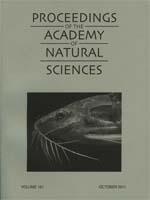Large raptors have complicated primary flight feather molt cycles because they cannot afford to be grounded for any significant amount of time. Ospreys (Pandion haliaetus) use Staffelmauser molt, the replacement of remiges in waves, allowing for constant mobility. Since their remiges are always in a molting cycle, Ospreys may grow feathers on their breeding and wintering grounds, each location providing its own distinctive stable isotopic signature. Herein we demonstrate that multiple analyses of carbon and nitrogen stable isotopes from several locations along the primary flight feathers of Mid-Atlantic Ospreys document the location of the individual during feather growth. Any previous studies regarding Ospreys feather growth locations were carried out through wear studies, a highly subjective practice. We document three distinct signatures, a breeding ground signature for the Chesapeake and Delaware Bays, and two wintering ground signatures, one in the Caribbean and one in northern South America. By analyzing multiple locations along each feather, a technique not executed before, we also document the continuation of molt during migration in a few specimens.
How to translate text using browser tools
1 October 2011
Using Carbon and Nitrogen Stable Isotopes to Distinguish the Locations of Feather Growth in Osprey (Pandion haliaetus)
Paula M. Zelanko,
Nathan H. Rice,
David J. Velinsky
ACCESS THE FULL ARTICLE

Proceedings of the Academy of Natural Sciences of Philadelphia
Vol. 161 • No. 1
October 2011
Vol. 161 • No. 1
October 2011




